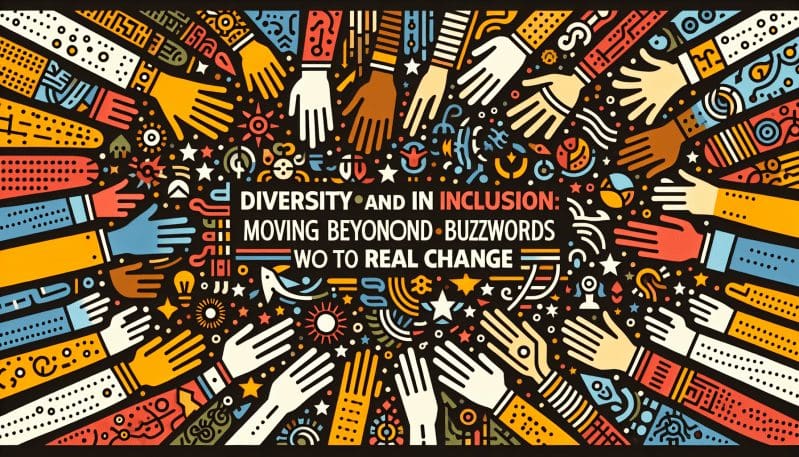In today’s workforce, the terms ‘diversity’ and ‘inclusion’ (D&I) are more than just buzzwords—they represent a movement towards a more equitable and representative professional environment. Yet, as we at The Work Times challenge our readers to delve deeper, we find that the landscape of D&I initiatives is often dotted with well-intentioned strategies that fail to address the nuanced psychological barriers inhibiting real change.
Our examination begins with the subtle and sometimes subconscious biases that many individuals harbor. These psychological blockades are not solely the remnants of an unenlightened past but are continually shaped by societal norms and media portrayals. For instance, the ‘similarity attraction paradigm’ suggests that we are more comfortable with, and thus more likely to hire and promote, those who resemble ourselves in appearance, beliefs, and background. This bias may not be overtly malicious, yet it undermines genuine diversity in the workplace.
Moreover, structural inequalities, such as unequal access to education, networking opportunities, and mentorship, impede the progress of D&I initiatives. These systemic issues can create an uneven playing field where only certain groups have the ‘right’ credentials or connections, leading to a homogeneous workforce.
The psychological impact on employees from underrepresented groups cannot be overstated. When diversity is treated as a checkbox rather than a core organizational value, it can lead to tokenism. This not only places undue pressure on diverse employees to ‘represent’ their entire group but also can exacerbate the feeling of ‘otherness’ and lead to isolation within the workplace.
Common D&I strategies often include training programs designed to raise awareness of these issues. While these are crucial steps, they are sometimes critiqued for being performative rather than transformative. Real change requires embedding D&I into every organizational process—from hiring to product development—in a way that is fundamental and genuine.
So, what does an evidence-based approach to foster an inclusive workplace look like? It begins with transparent recruitment and advancement practices that mitigate biases. It involves creating mentorship programs that are inclusive of all employees, ensuring that everyone has access to the same opportunities. It requires a commitment to ongoing education and self-reflection, recognizing that D&I is a journey, not a destination.
Leadership plays a pivotal role in cultivating a truly inclusive environment. Inclusive leaders are self-aware, open to feedback, and committed to treating every individual with respect and fairness. They not only speak about D&I; they live it in their day-to-day management practices.
Finally, allyship is a potent tool for fostering diversity and inclusion. Allies actively support individuals from underrepresented groups through advocacy, mentorship, and by using their privilege to elevate voices that are less heard.
The call to action for our readers is not only to discuss or advocate for D&I but to be a part of the change that bridges the gap between ideals and practice. As The Work Times champions a critical approach to the work, worker, and workplace, we understand that real progress is a collective effort requiring commitment, creativity, and courage.
Let us move beyond buzzwords and work towards a future where diversity and inclusion are not separate from the work culture but are intrinsic to it—a future where every employee feels valued, heard, and included.




























